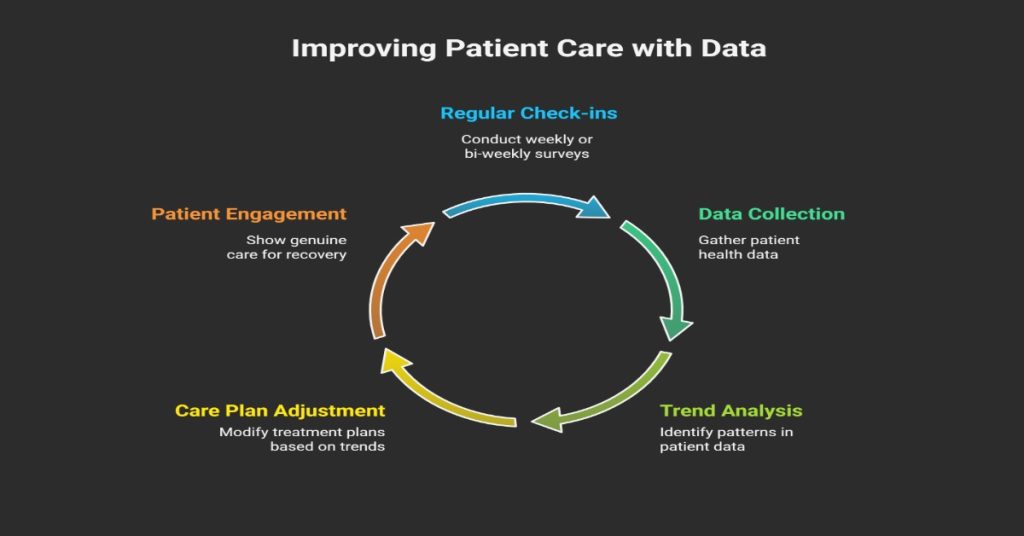You’ve had one of those days. The schedule was packed, you moved from one patient room to another, and you did your absolute best to provide top-quality care. But as you finally sit down, a question pops into your head: What did my patients really think?
Beyond the brief “thank you” on their way out, how did they feel about their wait time? Was the front-desk staff helpful? Did they understand the instructions for their new medication?
In the fast-paced world of healthcare, it’s easy to lose touch with the very people you’re dedicated to helping. You’re an expert in medicine, but your patients are the experts on their own experience. The gap between what you think is happening and what they are actually feeling can be huge. This is where a simple, yet powerful, tool comes in: the online survey.
Forget clunky paper forms and awkward in-person questions. Online surveys are a modern, direct line of communication that can completely change how you understand and improve your practice. They aren’t just about collecting data; they’re about building relationships and making healthcare more human.
Table of Contents
Why is Patient Feedback More Than Just a Suggestion Box?
Let’s be honest. You usually only hear from two types of patients: the extremely happy ones who sing your praises and the extremely unhappy ones who have a list of complaints. But what about the quiet majority in the middle? The ones who had a decent experience but see a few areas for improvement? Their feedback is pure gold, but they rarely speak up.
Online surveys give this silent majority a safe and convenient space to share their thoughts.

Addressing the “Small Stuff” That Makes a Big Difference
A patient might not tell you to your face that the waiting room music is stressful or that the online appointment portal is confusing. But they will absolutely mention it in an anonymous survey. These might seem like minor issues, but they shape the entire patient experience.
By using surveys to ask specific questions, you can pinpoint issues you never knew existed.
- Wait Times: Are your estimated wait times accurate? A survey can tell you how long patients feel they are waiting.
- Staff Interaction: Was every team member—from the receptionist to the nurse—friendly and professional?
- Clinic Atmosphere: Is the environment clean, comfortable, and welcoming?
- Communication: Did the patient feel heard? Did they leave with a clear understanding of their treatment plan?
When you gather this information, you’re no longer guessing. You have a clear roadmap for making small, meaningful changes that lead to happier, more loyal patients.
From Anecdote to Action: Improving Patient Care with Data
Your clinical judgment is invaluable. But supplementing it with structured patient data can lead to even better health outcomes. Online surveys aren’t just for checking on patient satisfaction; they are a clinical tool.
Think about it. You can use surveys to gather critical information outside of the 15-minute appointment window.
Pre-Visit Surveys: Imagine sending a patient a short survey a day before their appointment. You could ask about their current symptoms, list any questions they have for you, and confirm their medication list. When they walk into the exam room, you’re already up to speed. This saves precious time and makes the visit more focused and productive.
Post-Procedure Follow-up: How is a patient really doing a week after a minor procedure? Instead of relying on them to call if there’s a problem, an automated survey can check in. You can ask about pain levels, side effects, or any developing concerns. This proactive approach helps you catch potential complications early and shows your patients that you genuinely care about their recovery.
Managing Chronic Conditions: For patients with conditions like diabetes or hypertension, regular check-ins are key. A simple weekly or bi-weekly survey asking about their blood sugar readings, diet, or general well-being can provide a continuous stream of information. This data helps you spot trends and make adjustments to their care plan without needing a constant series of in-person visits.

Checking Your Team’s Vital Signs: Staff Satisfaction and Burnout
Your practice is only as strong as your team. Healthcare professionals are facing record levels of burnout, and the cost of high staff turnover is staggering—both financially and in terms of patient care quality.
How do you know if your team is struggling? Often, you don’t, until it’s too late.
Just as with patients, your staff needs a confidential way to voice their concerns and ideas. Regular, anonymous internal surveys are one of the best ways to keep a finger on the pulse of your organization.
You can ask questions about:
- Workload and Pace: Do team members feel they have a manageable workload?
- Support Systems: Do they feel supported by management and their peers?
- Resources: Do they have the tools and equipment they need to do their job effectively?
- Communication: Is internal communication clear and effective?
- Professional Growth: Are there opportunities for them to learn and advance?
The answers to these questions will give you a clear picture of your workplace culture. You can identify sources of frustration, celebrate what’s working well, and show your team that their well-being is a priority. A happy, supported team provides better care, period.
Making It Work: Best Practices for Your Online Surveys
Ready to get started? The idea of creating a survey can seem daunting, but it doesn’t have to be. Here are some simple guidelines to make your surveys effective.
1. Keep It Short and Simple
Everyone is busy. A long, complicated survey is a survey that won’t get finished. Aim for 5-10 questions that a person can answer in under three minutes. Respect their time, and they’ll be more likely to respond.
2. Ask the Right Questions
Use a mix of question types. Multiple-choice questions (e.g., “On a scale of 1-5, how would you rate…”) are quick to answer and give you clean data. But always include at least one open-ended question, like “Is there anything else you’d like to share about your experience?” This is where you’ll often find the most valuable insights.

3. Timing is Everything
When you send the survey matters. For post-visit feedback, sending it within 24 hours is ideal, while the experience is still fresh. For clinical follow-ups, schedule them at logical intervals (e.g., 3 days post-op, 7 days post-op). Use an automated system so you can set it and forget it.
4. Acknowledge and Act on the Feedback
This is the most important step. If people take the time to give you feedback, they need to know they were heard. You don’t have to implement every suggestion, but you should acknowledge the input. Periodically share general findings and the changes you’re making. For example, you could put a small sign in the waiting room that says, “You spoke, we listened! Based on your feedback, we’ve added more comfortable seating.” This closes the loop and encourages even more people to participate next time.
5. Protect Patient Privacy (The HIPAA Elephant in the Room)
When dealing with health information, security is paramount. You must use a survey platform that is HIPAA-compliant. This is non-negotiable. Using a secure tool protects your patients’ privacy and your practice’s integrity. Make sure to communicate this to your patients, so they feel safe sharing information.
Read More
Tired of Survey Silence? Your 2025 Step-by-Step Guide to Improving Survey Participation
Ensuring Mobile-Friendly Surveys for Better Results
Insider Tips for Successful Online Surveys: The Ultimate 2025 Guide
Your Direct Line to Better Healthcare
As a healthcare professional, your time is your most limited resource. You need tools that are efficient, effective, and deliver real value. Online surveys check all those boxes. They are not just another administrative task; they are a bridge to better communication with both your patients and your staff.
They give you the insights needed to improve the patient experience, the data to make better clinical decisions, and the feedback to build a stronger, more resilient team.
Start small. Create one simple survey for post-visit feedback. Listen to what you hear, make one or two small changes, and see what happens. You might be surprised by how much you learn and how a little listening can make a world of difference.

